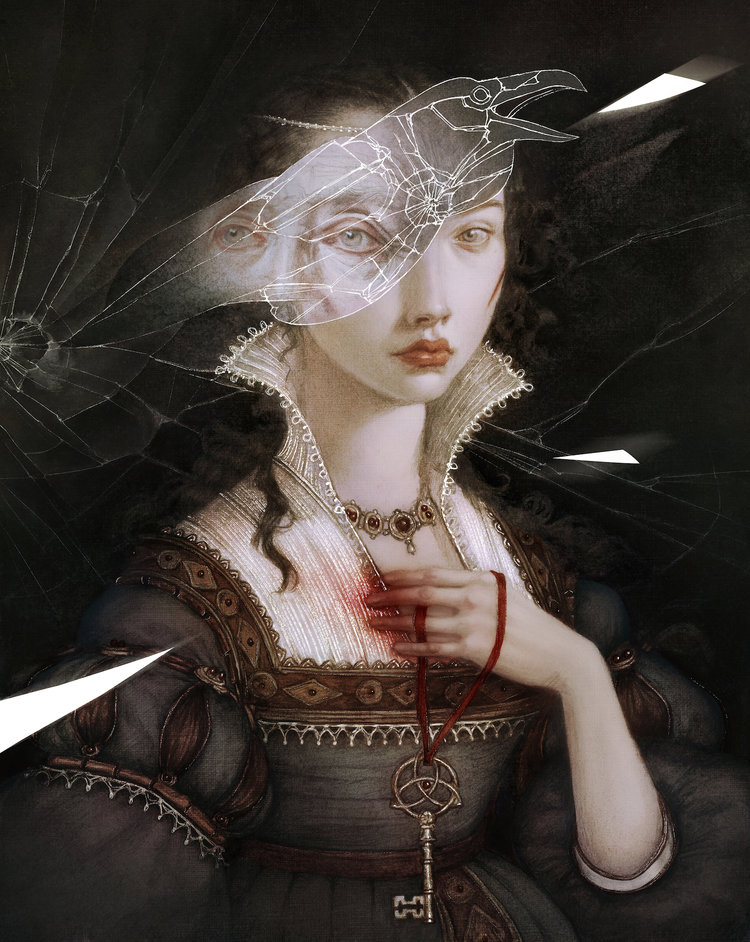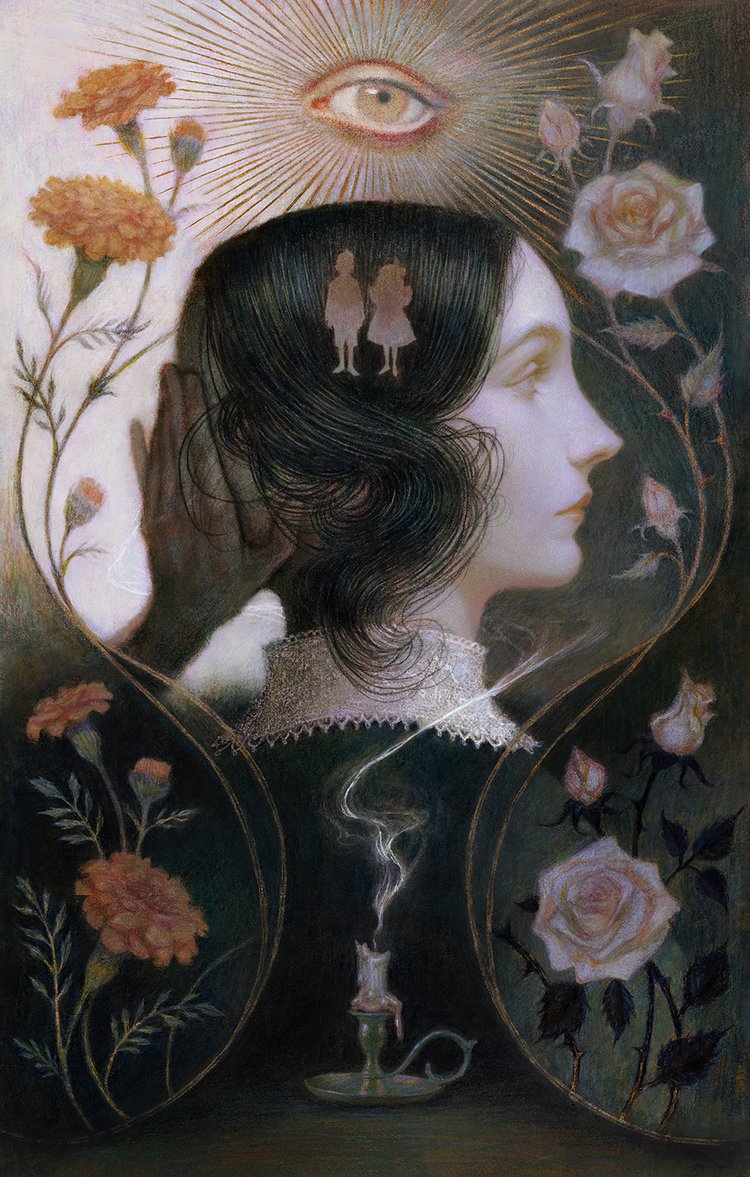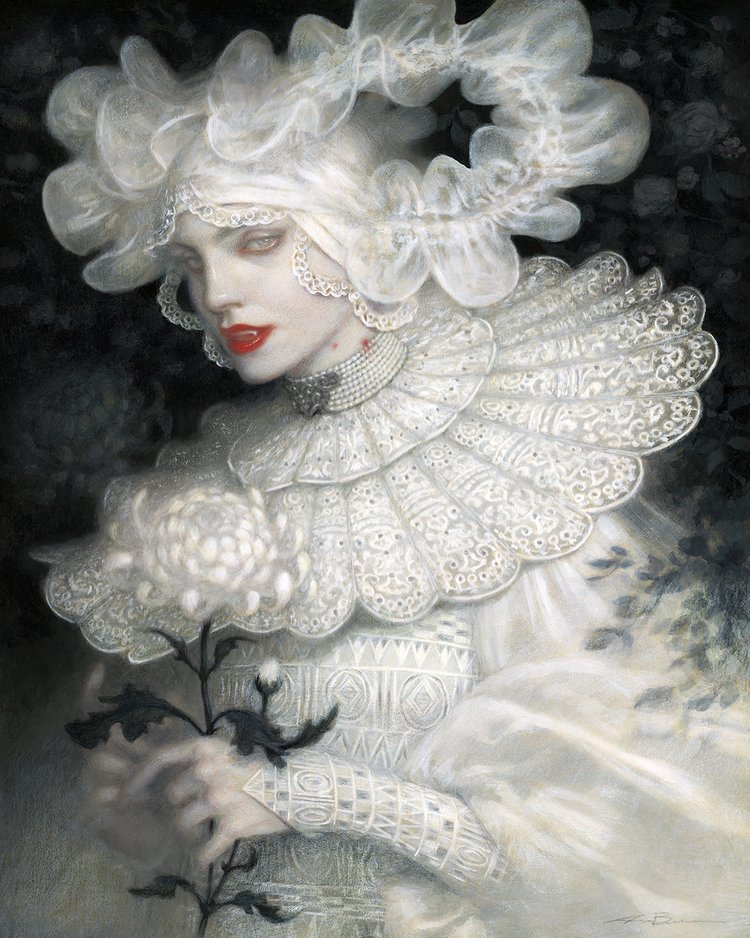b
Audrey Benjaminsen
Audrey Benjaminsen’s lovely, sweeping illustrations, with their lush, vivid colors and sinuous forms, perfectly render the haunting scenes from The Turn of the Screw, Dracula, and other Victorian classics. The clarity yet expressiveness of her imagery is felicitous to a world of specters, languishing ladies, gnarled fairies, and mythical creatures.


